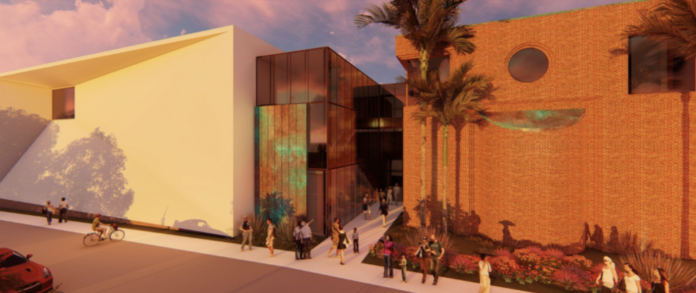
Salvatore Ambrosino
Features Editor
At one point in his life, curating a museum wasn’t on Dr. Alexander Rich’s horizon.
He’s a native manhattanite—an English major out of Dartmouth College, who came to Florida Southern College in 2014 to join the faculty of what is now the department of art history and museum studies. He became chair of that department.
But before that, in college, he was the arts editor for his student newspaper and the cartoonist for a political magazine. From a young age, he was an artist. His love for museums followed, and was fostered by his grandfather who would bring him to the museums of New York City.
“He really wanted to place into me some sort of love, and somewhere along the way, when I was still an artist, I became an art historian,” Rich said.
In high school, he would write papers on history as seen through art—”as art historians do” he says. In high school, an event like The Spanish Civil War passed through his eyes as Picasso’s “The Weeping Woman.” And by the time he was 16, he was a student apprentice at the Metropolitan Museum of art in New York.
“I always loved art history. I sensed in college I’d be an English major or an art history major—I chose english. I still think of myself very much as an English major to this day despite the fact I’m an art history professor,” Rich said.
He studied abroad in Florence, Italy, where the decision for him was cemented. He’d pursue a PhD in Art History.
“A lot of people probably knew I’d end up in the art world in some way,” Rich said. “So, I returned to New York City after Dartmouth.”
There, he worked at museums all over New York City. From the Brooklyn Museum to the Whitney Museum in the Meatpacking District in Manhattan.
“We realized that having the museum presented really good opportunities for our students across campus,” Rich said. “Specifically those students who are studying art history or to have careers in the museum field, so we ended up breaking off the department.”
The department of art history and museum studies sprung from the department of art and art history. As stated, Rich headed this department. But when the college partnered with Polk Museum of Art in 2017, he also found himself at the helm of a museum—an “academic-community” museum—meant for the community as much as it is for aspiring art historians at the college.
Three years ago he became the museum’s executive curator.
FSC’s department of art history and museum studies is housed within the Polk Museum of Art. The building is 34 years old, large and brick—a brick expressionist agora in a neighborhood of old, wooden and meaningfully historic city bungalows. Its exterior is soon to evolve, as was revealed by Dr. Anne Kerr at the museum in February.
“It’s been a long time dream to make the museum bigger and better and to allow it to meet its aspirations,” Rich said. “When we affiliated with Florida Southern in 2017, we knew we were transforming the museum from its legacy as a community museum into what we call an academic museum.”
In its shift from community to academic-community what changed first was what lives in the museum day-to-day.
“As we’ve done over the past 5 years, since the affiliation, we’ve brought in new audiences, we’ve brought in master-class exhibitions,” Rich said. “We’ve elevated everything that we do at the museum to the point now that having an expansion is part of our duty to do something to make the museum more substantial and more meaningful for our community.”
One of the museum’s main goals that it carefully maintains, according to Rich, is its accessibility to vast, diverse audiences. Its not exactly an art, he says, but a subtle balancing act.
“You want to have the perfect balance,” Rich said “So that everybody, no matter their familiarity with art, or art history. . . no matter who they are, no matter what their experience or background, will find something here that appeals to them. That’s my job.”
When he succeeds at this feat, he says it feels good.
“So that the experience is exemplary for everybody who walks through the door,” Rich said. “It feels really good to be able to change somebody’s day—open their eyes to something they may not have been aware of before.”
The Museum Ambassadors Program (MAP) allows students to work within the growing PMA.
“The benefits of being involved at the museum are fortunately twofold for me,” Museum Ambassador Rachel DiPofi said. “I’m incredibly grateful that MAP allows me to contribute to visitor experience and student involvement at the Museum.”
DiPofi has had the opportunity to work as a curatorial intern under Rich. She says she talks about the experience every chance she gets, since it allows her to work physically with the art.
“I continually hope that other Florida Southern students of all disciplines are aware and enjoy all that the museum has to offer,” DiPofit said.
DiPofi has grown to appreciate the arts culture in Lakeland since she transferred into the college her sophomore year.
“It’s truly rewarding to play just a small part in the ever-growing reach that the museum has,” DiPofi said. “Obviously, the museum holds a special place in my heart, but more so, I feel that the museum itself is a vital part of campus life.”







